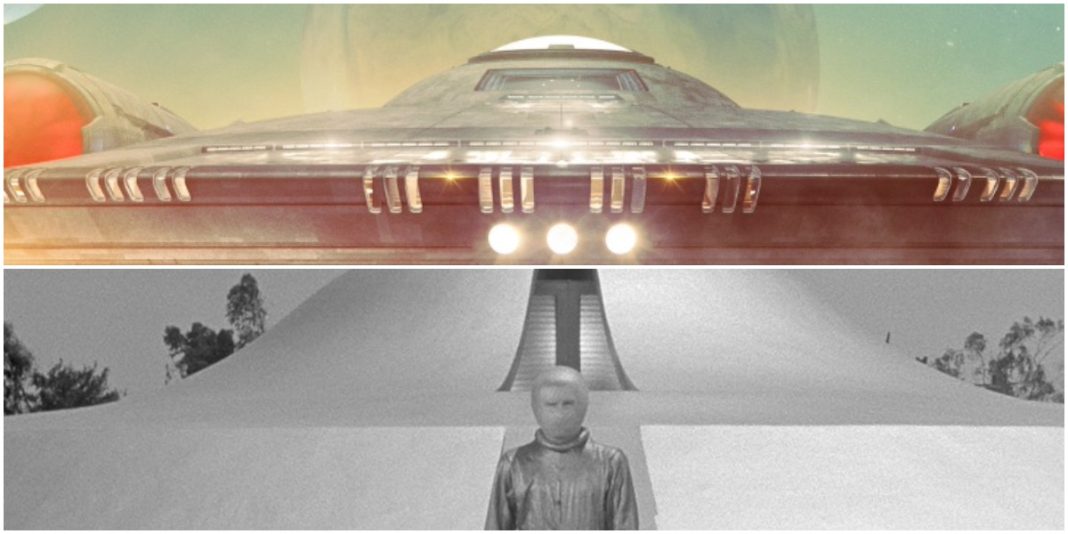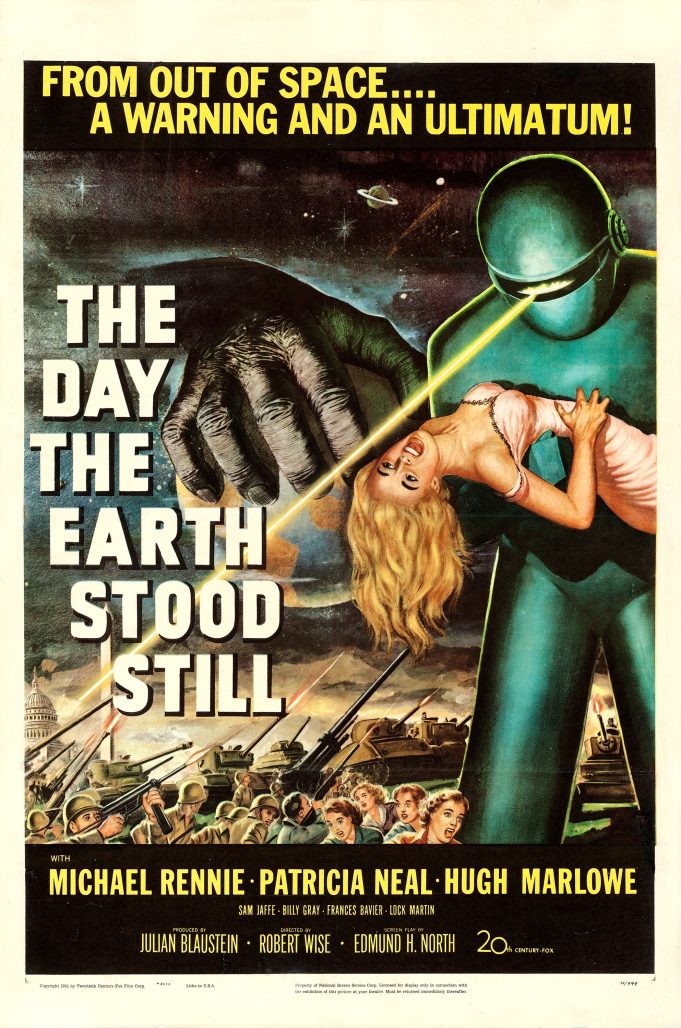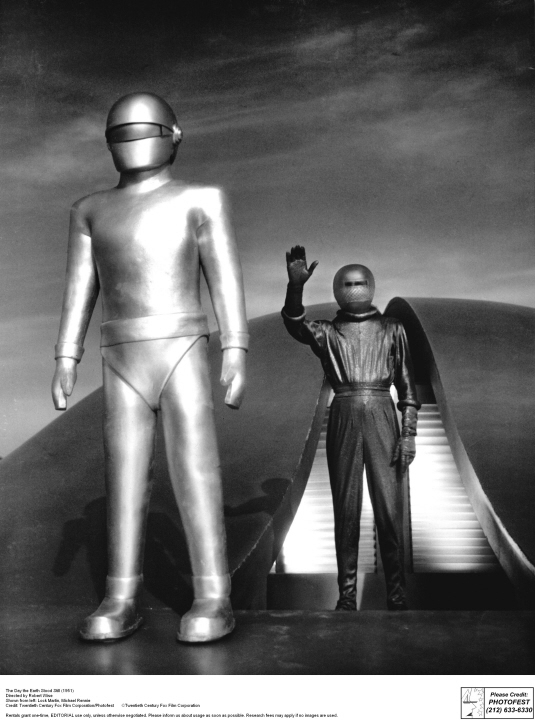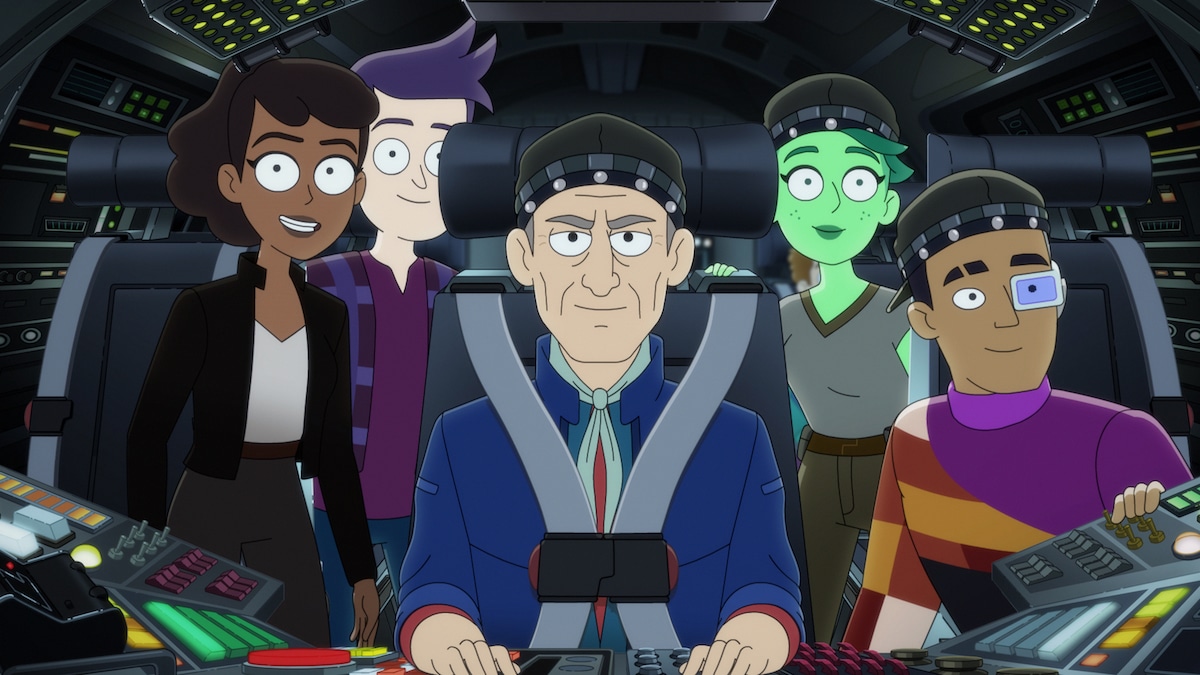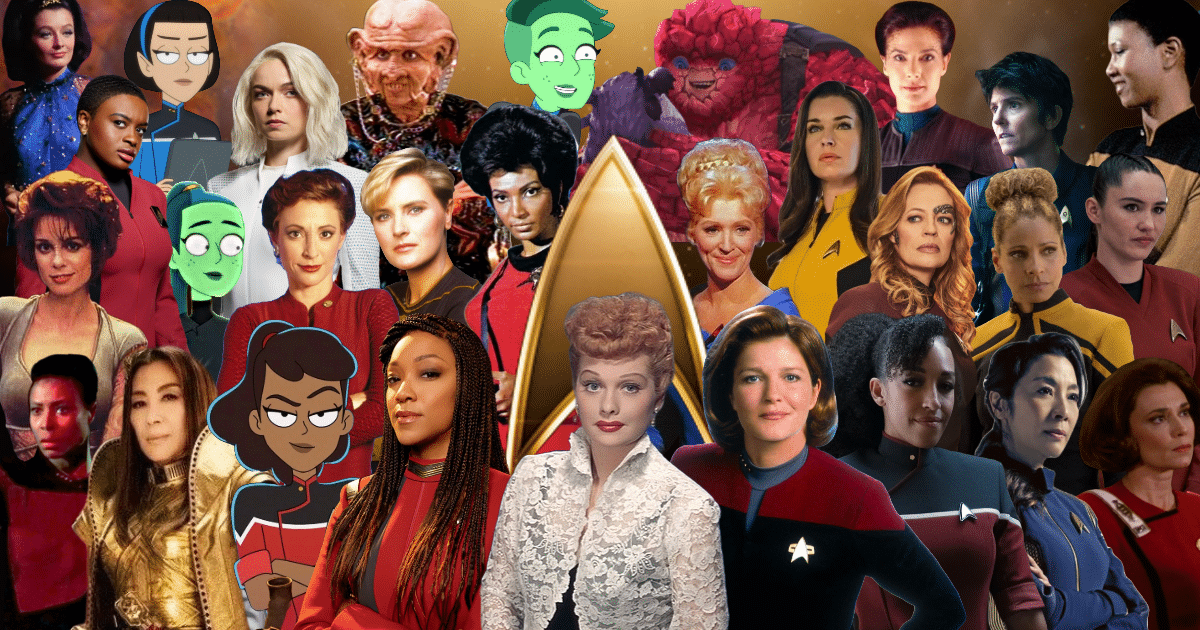Warning: The first episode of Star Trek: Strange New Worlds, “Strange New Worlds,” has been released for streaming on Paramount+ today, and this article includes spoilers… as well as spoilers for TDTESS!
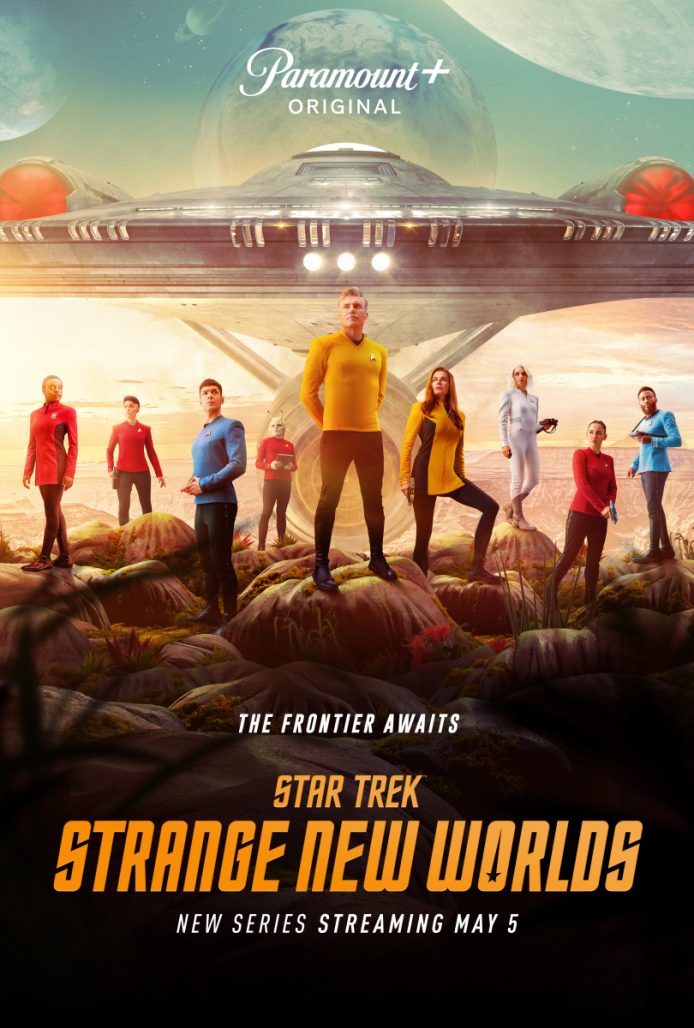
In the opening scenes of SNW, Captain Christopher Pike (Anson Mount) is seen watching The Day the Earth Stood Still. The story and thematic concerns of the movie are heavily echoed by the first episode of SNW, and the series embodies the socially conscious themes that characterized classic sci-fi stories like this and others.
The Day the Earth Stood Still
Released in 1951, TDTESS was based on a short story by Harry Bates and directed by Robert Wise. It stars Michael Rennie as Klaatu and Patricial Neal as Helen Benson, with Lock Martin as the imposing Gort. It also features Shalom “Sam” Jaffe, an actor who was blacklisted for being a “communist sympathizer,” as Professor Jacob Barnhardt.
Wise has an obvious connection to the Trek franchise: he directed Star Trek: The Motion Picture. In a commentary originally included on the 2003 release of TDTESS, Star Trek II: The Wrath of Khan writer and director Nicholas Meyer interviewed Wise, and Wise shared thoughts on making the seminal science fiction film, including on the importance the political message behind the movie.
According to Wise, the anti-nuclear war message behind TDTESS was part of what attracted him to the project in the first place. Wise explained that he accepted the directing job after reading the first draft of the script by Edmund H. North because he “liked particularly what it had to say about the threat of atomic war and atomic power, what turned out to be nuclear war.”
Speaking of North, Wise stated that his script was responsible for the many parallels to Christian mythology in TDTESS, such as Klaatu’s resurrection and his use of the alias “Carpenter.” While Wise concedes that the parallels are obviously present, he states that he wasn’t cognizant of them until after the film had been release and he had read some of the critical responses.
Another technique utilized by TDTESS to emphasize the urgency of its message is metafiction, breaking the fourth wall by using real-life commentators like Elmer Davis, Gabriel Heatter, Drew Pearson, and H.V. Kaltenborn.
Wise told Meyer that the commentators were attracted to the movie for the same reason he was: “They all liked the idea very much, what the film had to say about atomic warfare and putting it down.” Wise said that the executive in charge of production, Darryl F. Zanuck, wasn’t concerned about the movie’s “political message,” he just cared that it was a “damn fine piece of entertainment.”
But the movie’s message did broker disapproval from one quarter: the United States military. Wise submitted the script for military approval, a process that (should approval be granted) results in the ability to use certain U.S. military vehicles and personnel in the film. However, the script was not approved: “I guess they didn’t like the message.” Instead, the National Guard was contacted, and they allowed for the use of their equipment.
Meyer expresses some skepticism over the nature of the Gort-enforced ultimate at the conclusion, calling it “Orwellian,” “dictatorial,” and “wish-fulfillment for an anti-nuclear solution to be imposed on Earth before we blow ourselves up.” But Wise, who identifies himself as a lifelong “anti-militarist,” doesn’t seem to think the ultimatum offered by Klaatu at the conclusion of the movie is all that unreasonable.
“Well, how else would you deal with these governments in this world of ours, except to have something hanging over them to force them into it,” said Wise.
The Day Kiley 279 Stood Still
It isn’t just the fact that an early scene in the pilot for SNW, “Strange New Worlds,” features Pike watching the 1951 classic that evokes TDTESS: the very plot of the episode echoes the film’s, with Pike standing in for Klaatu and Kiley 279 standing in for Earth.
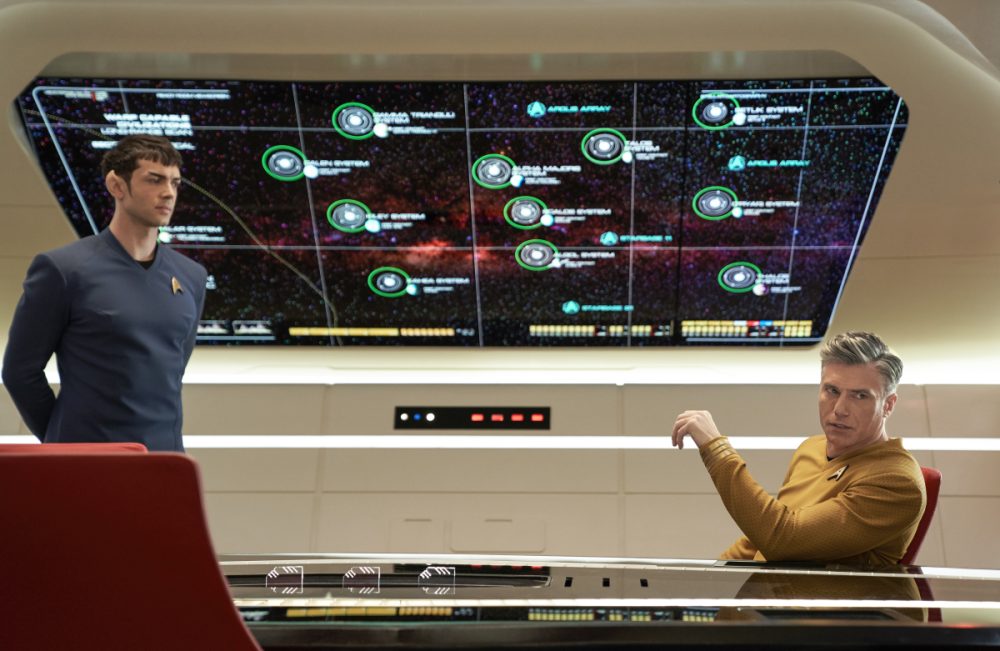
The parallel is made clear shortly after Pike and the rest of the away team beam down to Kiley 279. Upon seeing a new broadcast reporting on mass protests and distrust in the government, Pike remarks that it reminds him of “Old Earth.” Spock (Ethan Peck) is familiar with our planet’s history, and comments on the now-defunct government of the United States (and its two Civil Wars).
If that weren’t un-subtle enough, the parallel is further underscored in the climactic scenes of the episode, in which Pike addresses the planet of Kiley 279 as a whole (just as Klaatu does as the conclusion of TDTESS) and directly makes the comparison between the people of Kiley 279 in the 23rd century and the people of Earth in the 21st century (i.e., the audience).
And just as TDTESS broke the fourth wall by casting actual journalists, SNW breaks the fourth wall by using actual news footage, making it impossible to escape the fact that his message is meant for us.
SNW & TDTESS: warnings… and ultimatums!
At the conclusion of TDTESS, when Klaatu issues his ultimatum to the people of Earth, warning them to disarm their nuclear weapons or face inevitable destruction, he isn’t just speaking to the people on the screen, he’s speaking to those in the audience.
In that same fashion, while Pike is ostensibly speaking to the people of Kiley 279, he’s actually speaking to the audience: the people of 21st Century Earth. The message is clear: as we increasingly come closer to turning to violence instead of rhetoric to “resolve” our disagreements.
Unlike TDTESS, there is no Gort to enforce the ultimatum, either in our world or in SNW. However, just as Pike urges the people of Kiley 279, it is possible to choose a different path, and work towards a better future rather than a bleak one.
New episodes of SNW are available for streaming Thursdays on Paramount+.


